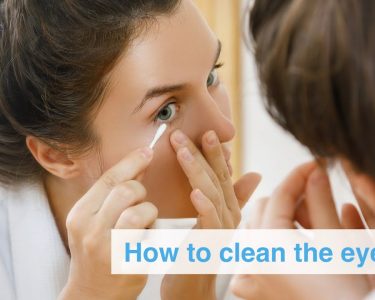Blepharitis is a common eye condition that affects millions of people worldwide. Characterized by inflammation of the eyelid margins, it can cause discomfort, itching, redness, and crusting around the eyelashes. However, one of the most frequently asked questions is: is blepharitis contagious? Understanding whether you can catch it from someone else—or pass it on—is crucial for managing and preventing flare-ups effectively.
In this detailed guide, we’ll explore everything you need to know about blepharitis, its causes, symptoms, treatment options, and, most importantly, whether it’s contagious or not.
What Is Blepharitis?
Blepharitis is an inflammation of the eyelid edges where the eyelashes grow. It can affect people of all ages and often appears as red, swollen, or crusty eyelids. While it might sound like a simple irritation, the condition can become chronic and lead to ongoing discomfort or vision issues if left untreated.
There are two main types of blepharitis:
- Anterior Blepharitis – affects the front of the eyelid near the eyelashes.
- Posterior Blepharitis – involves the inner edge of the eyelid where it touches the eye.
Each type may have different causes and treatment options, but both share similar symptoms such as irritation, tearing, burning sensations, and a gritty feeling in the eyes.
Is Blepharitis Contagious?
Let’s answer the big question—is blepharitis contagious? The short answer is no, blepharitis is generally not contagious. You cannot “catch” it from another person like a cold or flu.
However, while blepharitis itself isn’t contagious, the bacteria or mites that contribute to it can sometimes spread under certain conditions. For example, sharing eye makeup, towels, or pillowcases with someone who has infected eyelids may increase the risk of irritation or bacterial buildup that can trigger blepharitis.
So, while you can’t directly “get blepharitis” from someone, poor hygiene or shared items may expose you to similar irritants or microbes that could lead to eyelid inflammation.
What Causes Blepharitis?
There are several underlying factors that can lead to blepharitis. The most common causes include:
- Bacterial infection: Staphylococcal bacteria on the skin can infect or irritate eyelid glands.
- Seborrheic dermatitis: A skin condition that affects the scalp and eyebrows may also extend to the eyelids.
- Mite infestation: Microscopic mites known as Demodex can live in hair follicles and oil glands, contributing to inflammation.
- Rosacea: A chronic skin condition that can affect facial and eyelid oil glands.
- Poor eyelid hygiene: Failing to clean the eyelid margins can lead to oil, debris, and bacterial buildup.
This leads us to another frequently asked question — blepharitis is it contagious or related to mites? While mites themselves can move between hosts, they are naturally present on human skin and usually only cause problems when they multiply excessively.
Understanding Demodex Blepharitis
Demodex blepharitis occurs when there’s an overgrowth of Demodex mites on the eyelashes and follicles. Many people wonder: is demodex blepharitis contagious? The answer is somewhat nuanced.
While Demodex mites can transfer from one person to another through close contact, this doesn’t mean everyone exposed will develop blepharitis. The condition arises mainly when the mites multiply excessively, causing blockage, inflammation, and irritation of the eyelid glands.
In other words, Demodex presence alone doesn’t equal infection—it’s the overpopulation and immune response that leads to the symptoms of blepharitis.
Symptoms of Blepharitis
The symptoms of blepharitis can vary in severity but typically include:
- Red, swollen, or crusty eyelids
- A burning or stinging sensation
- Itchy or flaky eyelid margins
- Watery or dry eyes
- Sensitivity to light
- A feeling of “grit” or something in the eye
- Loss of eyelashes or eyelash misalignment
These symptoms often worsen in the morning and can come and go, especially if the condition becomes chronic.
To better understand the broader context, many eye specialists group this under blepharitis symptoms, causes, diagnosis, and treatment, emphasizing that early diagnosis can prevent complications such as chalazion or stye formation.
Can Blepharitis Spread Between Eyes?
Even though blepharitis isn’t contagious, it can sometimes appear to “spread” from one eye to the other. This happens because both eyes are exposed to the same bacteria or mites, and habits like rubbing your eyes can transfer irritants from one eyelid to another.
That’s why maintaining proper hygiene—washing your hands frequently and avoiding touching your eyes—is essential.
How Doctors Diagnose Blepharitis
Diagnosing blepharitis typically involves a physical examination by an eye doctor. The specialist will inspect your eyelids using a slit-lamp microscope to look for redness, swelling, or buildup around the lashes.
In some cases, the doctor may take a small sample of oil or crust to analyze under a microscope, particularly if Demodex mites or bacterial infections are suspected.
Accurate diagnosis is important because the treatment can vary depending on whether the cause is bacterial, seborrheic, or mite-related.
Treatment for Blepharitis
Blepharitis is often a chronic condition, meaning it can come and go over time. Although there’s no permanent cure, symptoms can be managed effectively with consistent eyelid hygiene and medical care.
Common treatments include:
- Warm compresses: Applying a warm, moist cloth to your eyelids can help loosen debris and soften oils that may be clogging the glands.
- Eyelid cleaning: Gently cleaning your eyelid margins removes bacteria, crust, and oil buildup. If you’re wondering How to Clean Eyelids Blepharitis, it involves using a mild, non-irritating cleanser like diluted baby shampoo or specialized eyelid wipes.
- Antibiotic ointments or drops: These may be prescribed if a bacterial infection is present.
- Steroid eye drops: Used in short courses to reduce inflammation.
- Oral antibiotics: For severe or chronic blepharitis linked to rosacea.
Natural and Herbal Remedies for Blepharitis
While conventional treatment focuses on hygiene and antibiotics, many people also turn to natural remedies for blepharitis to ease symptoms and support eye health. Herbal and home-based remedies can complement medical treatment and provide gentle, long-term relief.
Here are some natural options often discussed in holistic eye care:
- Tea tree oil: Diluted tea tree oil can help control Demodex mites and bacteria.
- Aloe vera gel: Has soothing and anti-inflammatory properties.
- Coconut oil: Moisturizes dry eyelids and has mild antibacterial effects.
- Warm chamomile compress: Can reduce irritation and promote healing.
Some herbalists even suggest approaches for how to cure blepharitis fast and naturally with herbal remedies, though “fast” recovery depends on consistent care and lifestyle adjustments.
Natural Treatment for Blepharitis
Many people prefer a natural treatment for blepharitis to avoid the side effects of synthetic medications. Such approaches emphasize improving eyelid hygiene, diet, and natural anti-inflammatory remedies.
For instance, omega-3 fatty acids from flaxseed or fish oil can improve the function of the meibomian glands, reducing dryness and irritation. Similarly, herbal supplements supporting eye and immune health can be beneficial.
A product like Tarcical – blepharitis eye health supplement for pain is often mentioned among natural support options for managing eye inflammation and discomfort. It’s not a substitute for medical treatment, but it may help maintain overall eyelid health.
Lifestyle and Hygiene Tips for Managing Blepharitis
Even though blepharitis contagious is not a concern, proper hygiene is still the foundation of prevention and management. Here’s how to keep flare-ups under control:
- Clean your eyelids daily: Use a warm compress followed by gentle cleaning with a mild cleanser.
- Avoid sharing eye products: Do not share towels, pillowcases, or eye makeup.
- Replace makeup frequently: Especially mascara and eyeliner, which can harbor bacteria.
- Remove makeup before sleeping: Always cleanse your eyelids before bedtime.
- Maintain a healthy diet: Include anti-inflammatory foods like fish, nuts, and leafy greens.
- Manage skin conditions: Treat dandruff or rosacea promptly to avoid recurrence.
Following these steps can help keep symptoms mild and prevent chronic irritation.
How Long Can Blepharitis Last?
Many people ask How Long Can Blepharitis Last, especially if symptoms seem to come and go. The duration varies based on the cause and how well it’s managed.
For some, it may last only a few days or weeks with proper care, while for others, it becomes a lifelong condition that requires ongoing management. Regular eyelid cleaning and treatment adherence can prevent recurrences and keep symptoms minimal.
When to See a Doctor
While mild blepharitis can often be managed at home, professional help is needed if:
- Symptoms persist despite home care
- Vision becomes blurry or distorted
- There’s severe pain, swelling, or discharge
- You notice loss of eyelashes or eyelid scarring
In such cases, an ophthalmologist can prescribe medication or check for other eye issues such as conjunctivitis, dry eye syndrome, or meibomian gland dysfunction.
Living with Blepharitis
Living with blepharitis can be frustrating, but understanding its non-contagious nature helps ease anxiety. Since blepharitis contagious myths often cause unnecessary worry, it’s important to remember that good hygiene and consistency in care make the biggest difference.
With proper management, people with blepharitis can live comfortably without major disruptions. Simple daily routines, natural remedies, and eye-friendly habits can go a long way toward reducing flare-ups.
Key Takeaways
- Blepharitis is not contagious. You can’t catch it from someone else.
- Demodex blepharitis involves mites but is not easily transmitted or infectious.
- Proper hygiene and eyelid care are essential to prevent flare-ups.
- Natural and herbal remedies can complement traditional treatment.
- Chronic blepharitis can be managed but not always permanently cured.
Whether you explore medical treatments or natural remedies for blepharitis affecting the eyelids, consistency is key.
Final Thoughts
Blepharitis may be uncomfortable, but it’s not something you can “catch.” While it’s natural to wonder if blepharitis contagious issues pose a risk to others, rest assured that this condition is primarily caused by bacteria, skin irritation, or mites—not person-to-person infection.
The best approach is maintaining eyelid hygiene, following your doctor’s advice, and considering holistic options like natural remedies for blepharitis and eye health supplements such as Tarcical – blepharitis eye health supplement for pain.
Remember that recovery and control depend on regular care. Even though blepharitis might come back, understanding its causes, treatments, and preventive measures will empower you to keep your eyes healthy and comfortable long-term.




